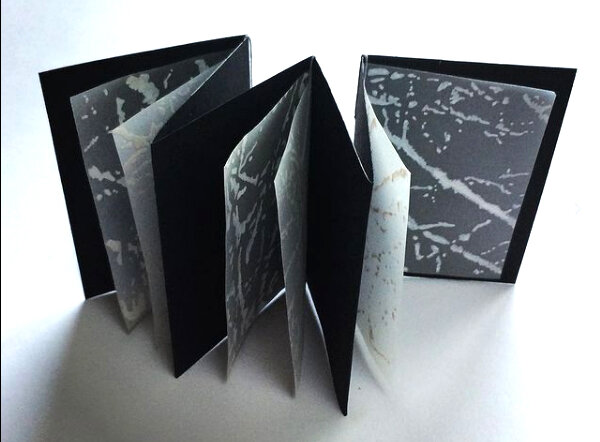Book cover of torn Somerset paper with a tracing paper wrapper
‘24.01.21’ – another snow markings book
The black paper shows off the markings well, but is maybe a bit heavy for the snowy subject matter
A tiny circular concertina book with a stitched line which follows a drawn line walk down my garden steps
Experiments with natural ink (made with red cabbage and a discarded bouquet) and masking fluid
Latest dyeing results – the multifarious browns of bramble
Feeling the gravitational pull back to making books this week… three tiny books have emerged from recent mark making work. Interesting to see how I’m still drawn to presenting work in a book format even when that’s not a conscious decision. This is process led though, which is different to my usual approach of choosing a format and then thinking of appropriate content. I’m enjoying experimenting with my natural inks and masking fluid (although I’m not sure how stable the colour will be, so probably best to scan these in to preserve them in some way). Quite a bit of dyeing going on in the background - this week’s finished results are from bramble prunings… a surprisingly broad range of browns. After a biting cold snap, the temperature has started to rise again and it’s beginning to feel like Spring is finally on its way. Hurray!


















